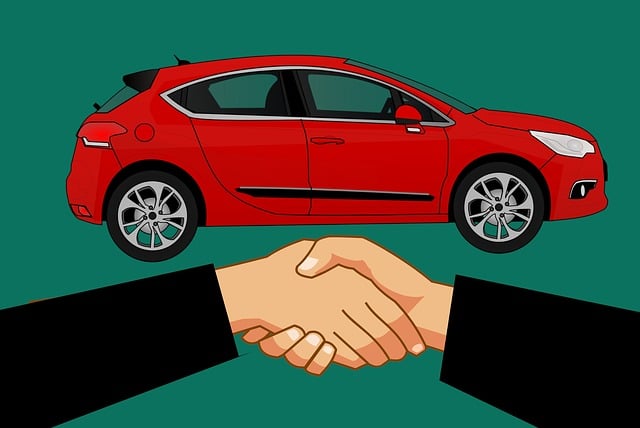Auto Insurance for High-Risk Drivers offers specialized protection tailored to individuals facing elevated premiums due to factors like at-fault accidents, traffic violations, or inexperience. Key policy elements include liability, collision, and comprehensive coverage, with some policies offering perks like defensive driving courses to reduce costs. High-risk drivers often face higher rates due to their increased risk profile, but strategic planning, comparison shopping, and responsible driving habits can help mitigate these costs. Understanding coverage options and building trust with insurers is crucial for securing cost-effective, personalized high-risk auto insurance. The future of this sector includes data-driven policies, real-time tracking, and the potential shift towards liability-based models with autonomous vehicle technology.
High-risk driver insurance is a specialized coverage option designed for individuals with impaired driving records or those deemed statistically more likely to be involved in accidents. This comprehensive guide explores auto insurance for high-risk drivers, demystifying its intricacies. From understanding eligibility criteria and the impact of driving history to navigating coverage options and finding affordable plans, this article provides valuable insights. Learn how to build trust, dispel myths, and stay informed about emerging trends shaping the future of high-risk driver auto insurance.
Understanding High-Risk Driver Insurance: A Comprehensive Overview

High-risk driver insurance is a specialized type of auto insurance designed for individuals who face higher premiums due to certain factors, such as a history of at-fault accidents, moving violations, or lacking a valid driver’s license. This coverage is tailored to protect both the driver and insurance company from potential risks associated with insuring these drivers. It offers a comprehensive solution, ensuring that high-risk drivers can still access affordable and reliable automobile coverage.
In the context of auto insurance for high-risk drivers, understanding the policy’s scope is vital. These policies typically cover damages to property and injuries to others caused by the insured driver. They may include liability coverage, which protects against claims for bodily injury or property damage, as well as collision coverage, which pays for repairs to the insured vehicle in case of an accident. Some policies also offer additional perks like defensive driving courses to help high-risk drivers improve their skills and potentially lower premiums over time.
Who Qualifies as a High-Risk Driver?

High-risk drivers are individuals who, due to various factors, present a higher level of danger on the road compared to average motorists. This category includes but is not limited to new drivers with little to no driving experience, drivers with a history of serious or multiple traffic violations, and those involved in at-fault accidents. Additionally, drivers operating vehicles with poor safety records or those who frequently drive under extreme conditions, such as bad weather or late at night, often fall into this high-risk group.
Auto insurance companies consider these factors when determining premiums for auto insurance for high-risk drivers. The goal is to reflect the increased risk associated with insuring these drivers and ensuring adequate coverage in case of potential accidents. As a result, high-risk drivers may face higher insurance costs and stricter policy requirements to maintain coverage.
The Impact of a Poor Driving Record on Insurance Premiums

A poor driving record can significantly impact auto insurance rates, especially for high-risk drivers. Insurers consider factors like traffic violations, at-fault accidents, and pending or past legal issues when calculating premiums. These elements are seen as indicators of risky behavior behind the wheel, which increases the likelihood of future claims and losses. As a result, drivers with such records often face much higher insurance costs compared to those with clean driving histories.
For high-risk driver insurance, the financial consequences can be substantial. Each violation or accident can lead to premium increases, making it crucial for these individuals to understand their coverage options. Shopping around for quotes and considering specialized insurers that cater to high-risk drivers can help mitigate some of the cost. Additionally, improving driving habits and maintaining a clean record over time may result in more affordable insurance rates down the line.
Exploring High-Risk Auto Insurance Coverage Options

High-risk auto insurance is tailored to provide coverage for drivers who may struggle to find standard policy options due to factors like multiple traffic violations, at-fault accidents, or a lack of driving experience. Exploring these coverage options is crucial for high-risk drivers looking to get back on the road safely and legally.
Policyholders can choose from various types of coverage, including liability, collision, comprehensive, and personal injury protection (PIP). Liability insurance protects against claims arising from accidents caused by the policyholder, while collision and comprehensive cover damages or theft of the vehicle. PIP, also known as medical payments, pays for medical bills and other related expenses in case of an accident, offering essential financial protection for high-risk drivers who may face higher healthcare costs.
How to Find Affordable High-Risk Driver Insurance

Finding affordable high-risk driver insurance can seem daunting, but there are several strategies to help make this process easier. Firstly, compare quotes from multiple insurers who specialize in auto insurance for high-risk drivers. Many companies offer competitive rates for specific demographics or driving histories, so shopping around is key. You can use online comparison tools to gather quick and accurate quotes from various providers.
Additionally, consider the factors that influence your premium costs. Things like age, gender, and driving history play a significant role. However, certain safety features on your vehicle, good student discounts, or completing defensive driving courses can help lower your rates. Discussing these options with potential insurers can lead to more affordable high-risk driver insurance tailored to your needs.
Building Trust and Saving Money: Tips for High-Risk Drivers

Building trust with an insurance provider is a key aspect for high-risk drivers looking to save money on auto insurance. This involves being transparent about your driving history, including any past accidents or violations. By demonstrating trustworthiness, insurers are more likely to offer competitive rates and tailored coverage options. Additionally, regularly reviewing and updating your policy can help identify areas where you might be overpaying.
High-risk drivers should consider comparing quotes from multiple providers to ensure they’re getting the best value for their money. They may also benefit from adding safety features like air bags or anti-lock brakes to their vehicles, as these can reduce premiums. Moreover, maintaining a clean driving record through safe and responsible driving habits will not only save money but also build a stronger relationship with your insurance company.
Common Myths and Misconceptions About High-Risk Insurance

Many drivers believe that high-risk auto insurance is overly expensive and doesn’t offer them any significant benefits. However, this couldn’t be further from the truth. High-risk driver insurance is tailored to provide coverage for individuals who face higher premiums due to certain driving conditions or records. It’s not about punishment; it’s about ensuring adequate protection for all parties involved on the road.
Another common misconception is that high-risk insurance only caters to severe offenders with multiple traffic violations. The reality is, this type of insurance is designed for any driver who has experienced a lapse in coverage, had a moving violation, at-fault accident, or lives in an area with high accident rates. It’s crucial to understand that auto insurance for high-risk drivers aims to offer accessibility to essential protection, not penalize individuals for past mistakes or circumstances beyond their control.
The Future of High-Risk Driver Insurance: Trends and Innovations

The future of auto insurance for high-risk drivers is being reshaped by technological advancements and evolving customer expectations. Insurers are leveraging data analytics and artificial intelligence to more accurately assess risk profiles, enabling personalized policies that cater to individual needs. Telematics devices, which track driving behavior in real-time, are becoming increasingly common, allowing insurers to offer dynamic pricing based on actual driving habits. This trend promotes responsible driving by incentivizing safe behavior through competitive rates.
Beyond data-driven approaches, the integration of autonomous vehicle technology is expected to significantly impact high-risk driver insurance. As self-driving cars become more prevalent, traditional coverage models may shift towards liability-based policies, focusing on compensating victims rather than direct repairs. This transformation could lead to lower premiums for safer drivers and increased accessibility to affordable auto insurance for high-risk individuals.
